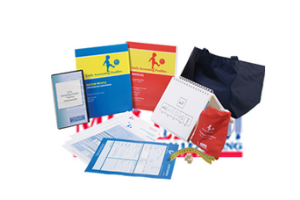Description
Early Screening Profiles (ESP) is an indispensable tool that uses multiple domains, settings, and sources to measure cognitive, language, motor, self-help, and social development.

Early Screening Profiles (ESP) is an indispensable tool that uses multiple domains, settings, and sources to measure cognitive, language, motor, self-help, and social development.
Early Screening Profiles (ESP) is an indispensable tool that uses multiple domains, settings, and sources to measure cognitive, language, motor, self-help, and social development.
Patti Harrison, Alan Kaufman, PhD, Nadeen Kaufman, EdD, Robert Bruininks, John Rynders, Steven Ilmer, Sara Sparrow, Domenic Cicchetti
Overview:Screens the five major developmental areas
Age Range:2:0-6:11
Scoring Option:Manual scoring
Completion Time:15-40 minutes
Scoring Options:Manual scoring
Early Screening Profiles is an indispensable tool that uses multiple domains, settings, and sources to measure cognitive, language, motor, self-help, and social development. It also surveys the child’s articulation, home environment, health history, and test behavior. The result is an ecologically valid assessment that provides a wealth of practical information to help you make accurate screening decisions, as well as plan intervention strategies for children and their families.
Professionals and paraprofessionals in educational, medical, or community settings will appreciate ESP’s clear directions, simple scoring system, and test items that appeal to the very young. This, coupled with straightforward parent and teacher questionnaires, makes ESP efficient and easy to use.
The three basic components, called Profiles, are supplemented by four Surveys. You can administer all of the profiles and surveys-or just the ones you need. For most children the Profiles can be administered in less than 30 minutes. The Surveys require an additional 15-20 minutes.
A national sample of 1,149 children, ages 2 years 0 months through 6 hears 11 months, was tested between October and December. The sample was stratified by sex, geographic region, parent education level, and race or ethnic group.
ESP is compatible with instruments that can be used for more detailed follow-up assessment, such as the Kaufman Assessment Battery for Children [K-ABC], Vineland Adaptive Behavior Scales, and Bruininks-Oseretsky Test of Motor Proficiency, to name just a few.
ESP’s three basic components, called Profiles, as supplemented by four Surveys. For most children, the total time needed for the three Profiles is under 30 minutes. The Surveys, completed by a parent, teacher, or screening examiner, require an additional 15 – 20 minutes.